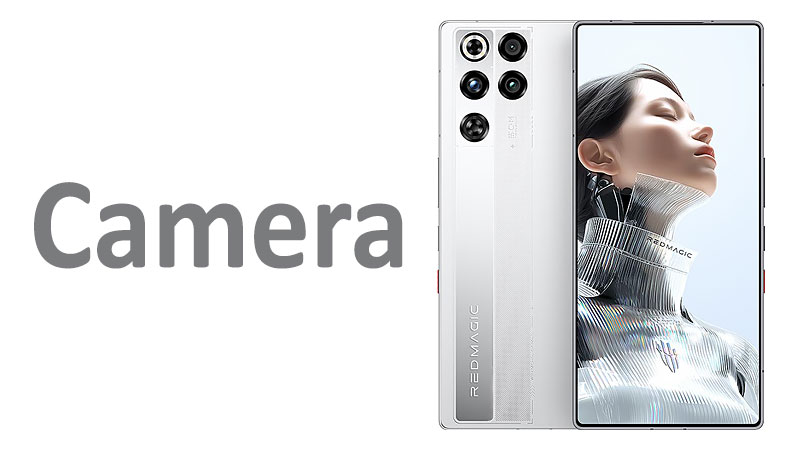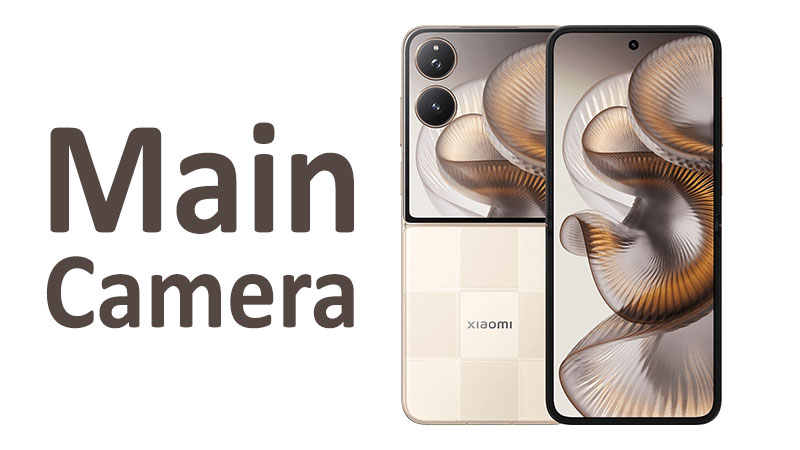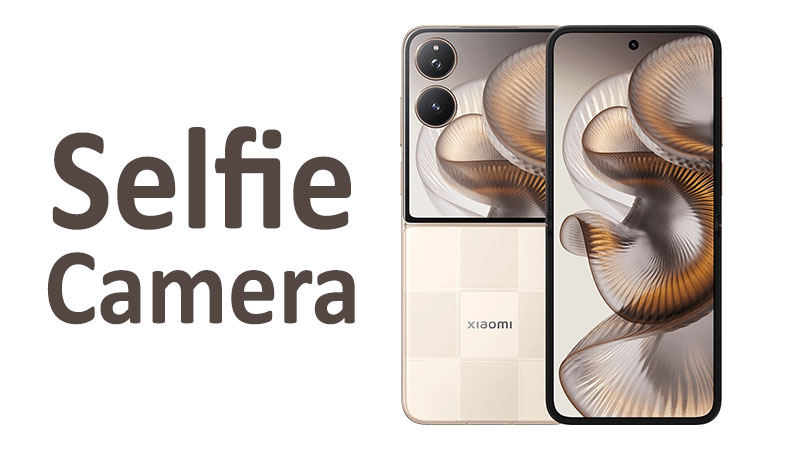The ZTE nubia Red Magic 11 Pro camera system presents a fascinating blend of high-end specifications and gaming-centric design choices. This powerful device prioritizes raw performance and innovative display technology. However, it still equips users with a formidable triple-camera array. This comprehensive review dives deep into the Red Magic 11 Pro camera’s specifications. We will analyze the performance of its 50 MP sensors and unique under-display selfie camera. Our goal is to provide a complete and SEO-optimized guide. You will understand how this gaming titan performs in the competitive world of mobile photography.
Core Specifications and Design Philosophy
The Red Magic 11 Pro is primarily known as a top-tier gaming smartphone. Therefore, its camera module reflects this unique product strategy. The focus is on a powerful main sensor and versatile video options. The overall camera package includes a triple rear setup. It also features a specialized 16 MP front camera. This design choice enables a completely distraction-free, full-screen gaming experience.
The Triple-Camera Rear Array
The rear system is headlined by a high-resolution 50 MP wide sensor. This is the workhorse of the entire setup. It is paired with another 50 MP sensor for the ultrawide perspective. This provides uniformity in detail for landscape and expansive shots. The third lens is a 2 MP macro sensor. This specialized lens focuses on extreme close-up photography. The camera supports essential features like LED flash, HDR, and panorama modes.
Advanced Main Sensor Technology
The main 50 MP sensor is built for speed and clarity. It features a large 1/1.55-inch sensor size. This size is excellent for gathering light efficiently. The sensor is also equipped with Phase Detection Autofocus, or PDAF. PDAF ensures rapid and accurate focus locking. Furthermore, Optical Image Stabilization, known as OIS, is included. OIS is vital for ensuring sharp stills and stable video footage. This hardware foundation promises high-quality output.
Video Capabilities for Content Creation
The Red Magic 11 Pro delivers professional-grade video formats. It can capture stunning 8K resolution video at 30 frames per second (fps). This is crucial for high-detail creators. It also offers versatile 4K video recording at 30 or 60 fps. Users can choose between standard and smooth action recording. Slower motion capture is supported at 1080p up to 240 fps. The camera system provides flexibility for various shooting needs.
Main Camera Analysis: The 50MP Wide Shooter
The primary 50 MP wide camera is arguably the most important lens. It is responsible for the vast majority of photos taken. ZTE nubia has equipped this sensor with excellent hardware. This ensures competitive performance against non-gaming flagship phones. The camera focuses on high detail and consistent performance.
Hardware Breakdown: Sensor, Aperture, and OIS
The main sensor size is 1/1.55 inches. This large physical size allows the sensor to capture more light. It improves image quality, especially in challenging lighting conditions. The lens uses a wide f/1.9 aperture. A wide aperture shortens the shutter speed. This is important for reducing motion blur. The combination of the large sensor and wide aperture is excellent for general use. It provides great clarity and depth.
PDAF enables the camera to focus almost instantaneously. This is essential for capturing fleeting moments. More importantly, OIS actively moves the lens elements. It compensates for minute hand movements. OIS ensures that images remain sharp when shooting handheld. It also significantly stabilizes video recording. This feature solidifies the Red Magic 11 Pro camera’s reliable performance.
Daylight Performance: Detail and Color
In bright daylight, the 50 MP main sensor captures images with exceptional detail. The high pixel count resolves fine textures accurately. Photos show great clarity from edge to edge. Colors appear vibrant and well-saturated. The camera’s dynamic range is strong. It handles scenes with high contrast effectively. For example, it preserves details in bright clouds and dark shadows simultaneously. The resulting images are highly usable right out of the camera.
The PDAF system proves its worth in these ideal conditions. It locks focus quickly and maintains sharpness on the subject. Photographers can easily capture complex compositions with confidence. The overall daylight performance is undoubtedly flagship-level.
Low-Light and Night Mode Performance
Low-light photography tests a camera’s core capabilities. The large 1/1.55-inch sensor helps the Red Magic 11 Pro gather ambient light effectively. The wide f/1.9 aperture maximizes the light reaching the sensor. When shooting at night, the camera employs computational photography techniques.
The software captures several short-exposure frames. It then intelligently merges them into one final image. This process effectively reduces digital noise. It also preserves detail in darker areas. The addition of OIS is critical for night shots. It allows the camera to use slightly slower shutter speeds. This happens without introducing excessive motion blur from human shake. The Red Magic 11 Pro delivers bright, clean, and detailed night photos. Its performance is respectable, even when compared to non-gaming rivals.
Secondary Lenses: Ultrawide and Macro Utility
The secondary lenses on the Red Magic 11 Pro round out the camera experience. They provide versatility for different types of photography. The ultrawide lens is intended for expansive scenes. The macro lens focuses on small subjects. Their performance characteristics differ significantly from the main shooter.
The 50MP Ultrawide Sensor Analysis
The ultrawide camera features a 50 MP sensor. This high resolution is a notable specification. Many competitor phones use lower resolution sensors for their ultrawide lens. The Red Magic 11 Pro maintains detail consistency across the main and ultrawide shots. This is a clear advantage for maintaining image quality.
The sensor size is 1/2.88 inches. The pixel size is 0.61µm. This is a smaller sensor compared to the main one. It features an f/2.2 aperture. The smaller sensor means it gathers less light than the main sensor. This limits its performance in very dark settings. However, in good light, the ultrawide lens captures expansive scenes. It handles barrel distortion through software correction. The resulting images are wide, detailed, and visually appealing.
The Dedicated 2MP Macro Lens
The third rear lens is a 2 MP sensor dedicated solely to macro photography. This is intended for extreme close-up shots of small objects. The lens has a fixed f/2.4 aperture. Macro photography can be fun and creative. It allows users to capture details invisible to the naked eye.
However, the low 2 MP resolution is a key limiting factor. Images captured by this lens often lack fine detail. This is compared to high-resolution sensors. Many flagship phones skip the dedicated macro lens. They instead use the high-resolution ultrawide sensor with autofocus for macro shots. The Red Magic 11 Pro opts for the dedicated but lower resolution solution. This choice is adequate for casual close-ups but not for professional macro work.
Video Capabilities: From 8K to Slow-Mo
The Red Magic 11 Pro is a performance powerhouse. This capability translates directly into its robust video features. The camera supports high-end recording modes. It offers flexibility for frame rates and resolutions. This makes it a capable device for mobile videography.
High-Resolution Video: 8K and Versatile 4K Modes
The camera system supports an impressive 8K resolution at 30 fps. This is a top-tier feature. 8K provides four times the pixels of 4K video. It is excellent for capturing maximum detail. It also gives creators immense flexibility for cropping and reframing. This is all possible during post-production.
The 4K recording options are more practical for daily use. Users can shoot at 30 fps for a standard look. They can also use 60 fps for smooth, fluid motion. The quality of the 4K video is sharp and clear. It benefits significantly from the high-resolution main sensor. The phone’s powerful processor easily handles these demanding video formats.
Stabilization and High Frame Rate Shooting
Video stabilization is essential for smooth footage. The Red Magic 11 Pro leverages OIS on the main sensor. This provides physical image stability. It also uses electronic stabilization (EIS) through its software. This combined approach ensures much smoother video, even when shooting handheld. The resulting footage looks professional and less shaky.
The phone also supports high frame rate recording at 1080p resolution. Users can capture video at 120 fps and even 240 fps. This is ideal for slow-motion effects. High frame rate footage reveals subtle details in fast action. This capability is perfect for sports or dramatic slow-motion clips. It adds significant creative flexibility for videographers.
Under-Display Selfie Camera: A Gaming Priority
One of the most defining and polarizing features is the front-facing camera. The 16 MP selfie camera is placed under the display. This technology provides a true full-screen experience. This is a massive advantage for gaming. It removes any notch or punch-hole obstruction.
Under-Display Technology and 16MP Specs
The under-display camera (UDC) technology is complex. It involves making the screen area above the lens transparent. This allows light to pass through to the 16 MP sensor. The lens has an f/2.0 aperture. This is a standard specification for a wide front-facing camera. The main purpose of this technology is an immersive visual experience. This technology is cutting edge but has known limitations.
The selfie camera records video up to 1080p at 30 or 60 fps. This is sufficient for video calls and casual vlogging. It supports HDR features. This helps to balance lighting in uneven conditions.
Image and Video Quality Trade-offs
The image quality from the under-display camera has an inherent trade-off. The layer of the screen above the sensor slightly diffuses the light. This reduces overall sharpness and clarity. Photos from the UDC are generally softer than those from a traditional punch-hole camera. This is especially true when light is poor.
The Red Magic 11 Pro accepts this compromise for the sake of gaming. The full-screen immersion is a major benefit for its target audience. Users prioritizing top-tier selfie quality may find this a slight drawback. However, for casual use and video calls, the UDC is perfectly functional. This design choice highlights the phone’s primary focus on gaming excellence.
Specialized Comparisons with Rivals and Predecessors
Assessing the Red Magic 11 Pro camera requires context. We must compare its capabilities against its own lineage and the wider market. This comparison clarifies its position in the competitive smartphone landscape. It reveals its strengths and weaknesses clearly.
Red Magic 11 Pro vs. Red Magic 10 Pro
The Red Magic 11 Pro likely builds upon its predecessor, the Red Magic 10 Pro. The core advancement lies in sensor size and stabilization. The 11 Pro upgrades the main sensor to a generous 1/1.55-inch size. It also adds OIS to the main lens. These are crucial physical improvements. The 10 Pro may have relied more heavily on EIS alone. The 11 Pro’s commitment to a 50 MP ultrawide sensor is consistent. However, the overall clarity and low-light performance see a noticeable boost. This is primarily due to the larger sensor and OIS. The Red Magic 11 Pro represents a significant hardware step forward for photography.
Red Magic 11 Pro vs. Competitor Flagships
The Red Magic 11 Pro occupies the niche of a gaming flagship. Non-gaming flagships, such as those from Samsung or Google, often prioritize camera systems. They often feature larger main sensors or dedicated optical zoom lenses. For example, some rivals use a 1-inch sensor or 5x optical periscope zoom. The Red Magic 11 Pro lacks a dedicated telephoto lens. It relies on digital zoom from the main sensor.
However, the Red Magic 11 Pro wins on its primary use case. It features the superior full-screen view provided by the UDC. Most competitors use a notch or punch-hole design. The Red Magic 11 Pro is competitive in main sensor quality and 8K video. It trades high-end zoom and selfie clarity for an unparalleled gaming display. This is a key difference in product philosophy.
Red Magic 11 Pro vs. Budget Flagships
When compared to budget flagships, the Red Magic 11 Pro’s camera shines brightly. It offers superior resolution across two lenses. It also provides the critical OIS feature. Many cheaper phones use smaller, non-stabilized main sensors. They often pair them with very low-resolution secondary lenses. The Red Magic 11 Pro’s commitment to a large 50 MP main sensor and 8K video elevates it significantly. It delivers a much more premium and versatile shooting experience than budget alternatives.
Pros and Cons: A Balanced Camera Assessment
Evaluating the Red Magic 11 Pro camera requires an objective list of its strengths and weaknesses. This system is optimized for a gaming phone. Therefore, some compromises are inherent to the design. This balanced view helps users set realistic expectations.
Pros of the Camera System
Powerful Main Sensor
The 50 MP main sensor with a 1/1.55-inch size is excellent. It captures superb detail and offers strong low-light performance.
Optical Image Stabilization
The inclusion of OIS on the main lens is a vital feature. It ensures sharp photos and stable video. This is essential for a high-end device.
Uniform Ultrawide Resolution
The 50 MP ultrawide lens maintains high detail across expansive shots. This avoids the quality drop seen on many phones.
Professional Video Recording
The camera supports both 8K@30fps and 4K@60fps recording. This offers professional flexibility for content creators.
Full-Screen Immersion
The under-display selfie camera provides an unbroken, full-screen view. This is a massive benefit for gaming and media consumption.
Cons and Potential Limitations
Lack of Optical Telephoto
The phone does not include a dedicated telephoto or optical zoom lens. This limits the ability to capture distant subjects without relying on digital crop.
Low-Resolution Macro Lens
The 2 MP macro lens provides limited detail. It is a lower quality solution compared to using an ultrawide with autofocus for macro.
Compromised Selfie Clarity
The under-display technology reduces the sharpness of the 16 MP front camera. Selfies are generally softer than those from traditional punch-hole cameras.
Heat and Performance Throttling
Intensive video recording, especially 8K, can generate significant heat. While the phone has advanced cooling, sustained high-resolution video might lead to thermal throttling.
Important Buyer Considerations and Key Takeaways
The Red Magic 11 Pro targets a specific user demographic. Potential buyers must understand how the camera system fits within the phone’s broader focus. These considerations are vital for making an informed purchasing decision.
Prioritizing Gaming Immersion
The inclusion of the under-display camera signals a clear priority. This phone is for the user who values gaming and media consumption above all else. They prefer an immersive, unobstructed screen. They are willing to accept the slight compromise in selfie camera clarity. This trade-off defines the device’s design philosophy.
Understanding Zoom Limitations
Buyers who frequently use the zoom feature should take note. The Red Magic 11 Pro lacks true optical zoom. It relies heavily on the high-resolution main sensor for digital zoom. The digital zoom performs well. However, it cannot match the lossless quality of a dedicated periscope telephoto lens. This is a key factor for wildlife or architectural photographers.
Utilizing 8K Responsibly
The 8K video recording feature is powerful. However, it is also demanding. It creates very large file sizes. Users need ample storage capacity. They also need powerful computers to edit and play back the footage. Most users will find the 4K@60fps mode more practical for daily use. The 8K feature should be reserved for specific, high-stakes recording needs.
Excellent Main Camera Quality
The quality of the main 50 MP camera is highly competitive. It delivers excellent performance in both daylight and low light. The addition of OIS makes this sensor reliable for all-around photography. Users can expect professional-grade results from this primary shooter. This makes the Red Magic 11 Pro a solid daily camera choice.
Conclusion
The ZTE nubia Red Magic 11 Pro camera system successfully navigates a difficult balance. It delivers a strong, high-resolution rear camera system. This is achieved while committing to a revolutionary full-screen experience for gamers. The core of the system is the 50 MP main sensor. It features OIS and a large 1/1.55-inch sensor size. This ensures sharp, clear images and stable 8K video. The 50 MP ultrawide lens further adds value. It provides consistent detail for expansive shots.
The system’s weaknesses are predictable. They result from the phone’s gaming focus. The lack of an optical telephoto lens and the softer quality of the UDC selfie camera are the main compromises. However, these trade-offs are acceptable for the target audience. They benefit from the superior, distraction-free display.
The Red Magic 11 Pro is an excellent choice for two groups of buyers. It is great for serious mobile gamers. It also serves general users who demand high quality from their primary camera. The phone successfully combines top-tier hardware with innovative design. It proves that a gaming phone can still deliver impressive photographic performance. The Red Magic 11 Pro is a compelling choice for its unique combination of power and imaging capability.
FAQ
Does the ZTE nubia Red Magic 11 Pro have a telephoto lens?
No, the Red Magic 11 Pro does not have a dedicated optical telephoto or periscope lens for zoom. It relies on digital zoom.
What is the resolution of the main camera sensor?
The primary wide camera on the Red Magic 11 Pro features a high-resolution 50 MP sensor. It includes OIS and PDAF.
Where is the selfie camera located?
The 16 MP selfie camera is located under the display. This design creates an uninterrupted, full-screen view for gaming and media.
What is the maximum video resolution supported?
The Red Magic 11 Pro camera can record video up to a maximum resolution of 8K at 30 frames per second (fps).
Does the Red Magic 11 Pro have OIS?
Yes, Optical Image Stabilization (OIS) is present on the main 50 MP wide camera. This ensures stability for photos and videos.



